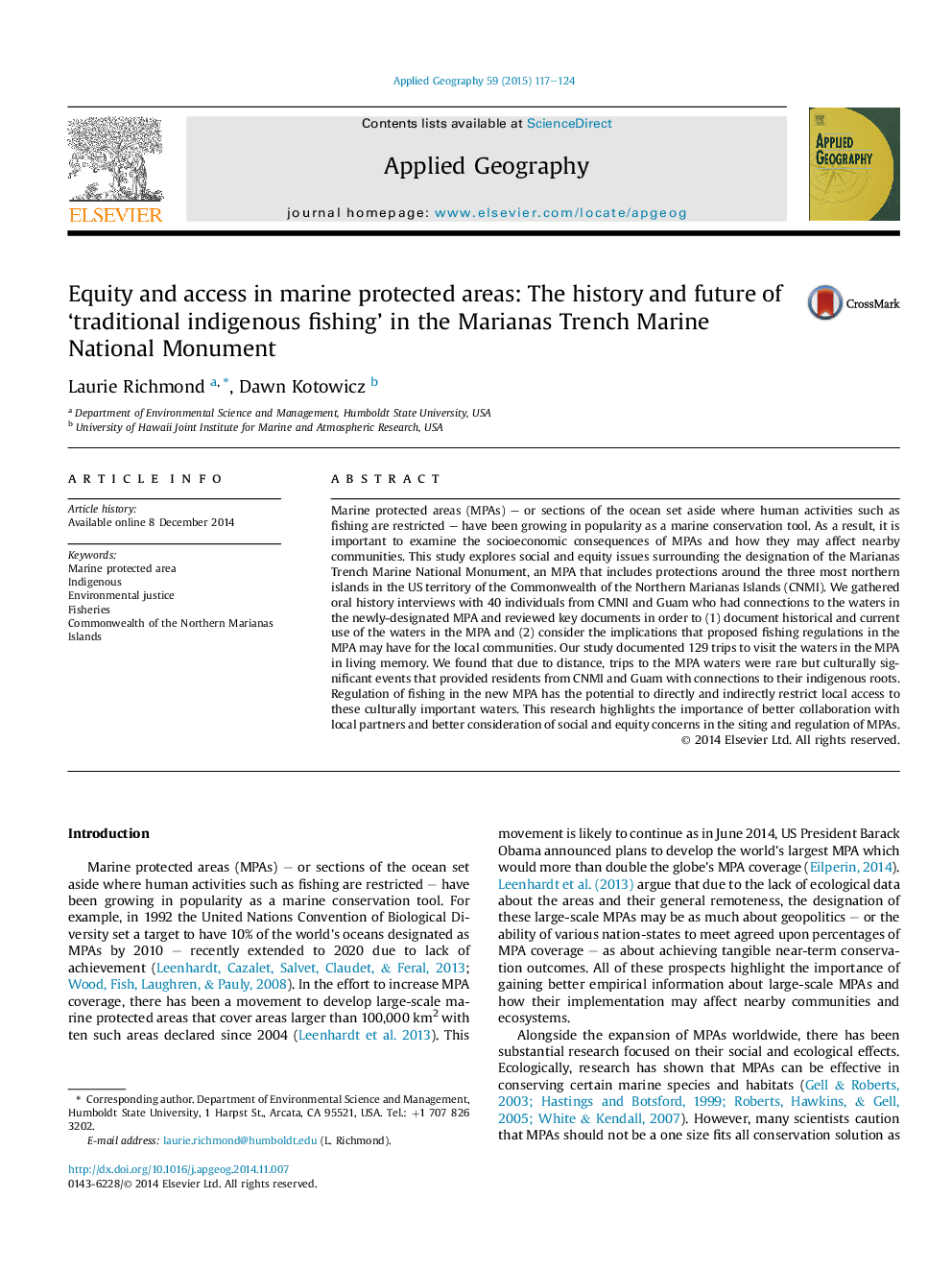| Article ID | Journal | Published Year | Pages | File Type |
|---|---|---|---|---|
| 6538577 | Applied Geography | 2015 | 8 Pages |
Abstract
Marine protected areas (MPAs) - or sections of the ocean set aside where human activities such as fishing are restricted - have been growing in popularity as a marine conservation tool. As a result, it is important to examine the socioeconomic consequences of MPAs and how they may affect nearby communities. This study explores social and equity issues surrounding the designation of the Marianas Trench Marine National Monument, an MPA that includes protections around the three most northern islands in the US territory of the Commonwealth of the Northern Marianas Islands (CNMI). We gathered oral history interviews with 40 individuals from CMNI and Guam who had connections to the waters in the newly-designated MPA and reviewed key documents in order to (1) document historical and current use of the waters in the MPA and (2) consider the implications that proposed fishing regulations in the MPA may have for the local communities. Our study documented 129 trips to visit the waters in the MPA in living memory. We found that due to distance, trips to the MPA waters were rare but culturally significant events that provided residents from CNMI and Guam with connections to their indigenous roots. Regulation of fishing in the new MPA has the potential to directly and indirectly restrict local access to these culturally important waters. This research highlights the importance of better collaboration with local partners and better consideration of social and equity concerns in the siting and regulation of MPAs.
Related Topics
Life Sciences
Agricultural and Biological Sciences
Forestry
Authors
Laurie Richmond, Dawn Kotowicz,
